Supporting materials
Download
Download this article as a PDF

When you read the newspaper, how do you know what to believe? Ed Walsh guides you and your students through the minefield of science in the media.
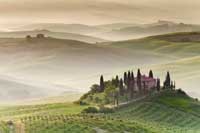
Science is all around us – but so is pseudoscience. Few of us read the original research papers behind every ‘science’ story, so how do we know what to believe? And why aren’t all media stories about science reliable? This classroom activity aims to teach students:

It is often hard to find out which of many possible causes has produced a particular outcome, such as skin wrinkling, especially if some of the possible causes are interlinked. In a scientific study we try to change only one thing at a time. This may sometimes be difficult, and we need to think of a way to account for that shortcoming, or consider conducting a different kind of study.
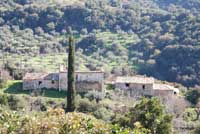
Explain that there are two main types of study that scientists could use to answer this question, an observational study and an intervention study. Observational studies are when scientists find people who have already brought the change they are studying into their lives (e.g. who has been using olive oil in their diet and who hasn’t?).
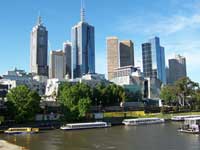
Ask the students to consider the advantages and disadvantages of this kind of study.
Draw out that observational studies use existing behaviours, so are cheap and easy to do, but may struggle to isolate single variables. People in the study group may well use different amounts of olive oil in their diets, but there are almost certainly going to be lots of other differences as well. As a result, it may be extremely difficult to clearly identify the extent to which the presence of olive oil is the significant factor in preventing the wrinkling of skin.
Explain that intervention studies (‘trials’) are when the scientists control the variables (e.g. you are going to have olive oil in your diet, but he is not).
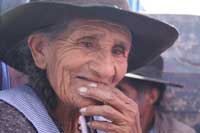
Explain that in 2001 a detailed scientific study was conducted into the wrinkling of skin on people who lived in Sweden, Greece and Australia, and that you are going to share the findings. Depending on the age and ability of the students, you could do this in one (or more) of three ways:
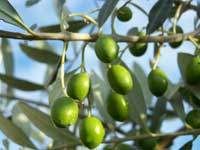
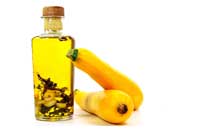
Some students may think that the news stories make the good advice in a rather dry research paper accessible to a wide range of people. Others may feel that it is not quite as simple as that, and that if you want smoother skin in old age you might have to do a bit more than consume more olive oil. Some may feel that simplifying the story to make it accessible, and leaving out the caveats, has also made it misleading.
Take a show of hands – if students saw the newspaper headline tomorrow, ‘Scientific study shows butter causes skin cancer’, would they stop eating butter immediately?
This study (br Purba et al., 2001) was set up to see if there was a correlation between the intake of various foods and nutrients and the wrinkling of skin in places with significant amounts of sunlight.
The study included four groups:
Group 1: 177 people born in Greece but now living in Melbourne, Australia
Group 2: 69 people born in Greece and living in rural Greece
Group 3: 48 Anglo-Celtic Australians living in Melbourne
Group 4: 159 people born in and still living in Sweden.
They were participating in the International Union of Nutritional Sciences ‘Food habits in later life’ study and had their dietary intakes measured and their skin assessed.
The results showed that Group 4 had the least skin wrinkling in a sun-exposed site, followed by groups 1, 2 and 3. Analysis of the data and identifying correlation with food groups suggested that there may be less skin damage amongst people with a higher intake of vegetables, olive oil, fish and legumes, and lower intakes of butter and margarine, milk products and sugar products.
High intakes of vegetables, legumes and olive oil seemed to offer protection against wrinkling whereas a high intake of meat, dairy and butter appeared to have the opposite effect.
This study illustrates that skin wrinkling in a sun-exposed site in older people of various ethnic backgrounds may be influenced by the types of foods consumed.
By Angela Dowden 13/06/2006
With temperatures soaring to record levels, it’s vital to protect yourself from the Sun’s rays. Here are the foods that can help…
By making a few simple changes to your diet, you can help protect your skin from sunburn, ageing and even cancer. Of course, you also need to keep wearing your sun lotion and a hat and stay in shade during the heat of the day, but here’s how to get some of your SPFs [sun-protection factors] on a plate…
Olive oil
An Australian study in 2001 found that olive oil (in combination with fruit, vegetables and pulses [legumes]) offered measurable protection against skin wrinkling. Eat more olive oil by using it in salad dressings or dip bread in it rather than using butter.
Bad Science is a book (Goldacre, 2008), a newspaper column in The Guardian and a websitew3 by Ben Goldacre, an award-winning writer and broadcaster who specialises in unpicking questionable scientific claims made by scaremongering journalists, dodgy government reports, evil pharmaceutical corporations, public relations companies and quacks. It promotes a healthy scepticism as a way of detecting powerful and effective uses of science and its misuses and abuses.
Ed Walsh, science advisor for Cornwall Learning, has taken eight of the case studies from the book and turned them into lessons to excite students (aged 14-16) and to encourage them to think for themselves and to use the Bad Science approach. To download the rest of the teaching materials, visit the Bad Science for Schools websitew4.
This article enables students to learn to think scientifically about what they read or hear in the media. Beginning with a role-play, the activity triggers their thinking and group discussion. The activity relates to digestion and health, and would therefore be suitable for biology lessons, but the structure of the activity could be used in any science lesson to encourage critical thinking.
For students aged 14-16, the activity could be used as described. For younger students (aged 11-13), this article could encourage the teacher to use the media cautiously to raise awareness of science topics or as the basis of class discussions on topics related to the curriculum.
At the end of the activity, a class discussion could move beyond the science curriculum, examining the implications of dieting, sun exposure and cosmetic surgery
Stephanie Maggi-Pulis, Malta
Download this article as a PDF